Overclocking Intel’s Core i7-7700K: Kaby Lake Hits The Desktop!
Intel's new Kaby Lake CPU delivers on the clock speeds the company promised, but the power consumption and thermal characteristics were disappointing based on a leaked sample of the new chip we received and tested weeks ahead of its official launch.
Benchmark Results
A recent upgrade to our Windows 10 test suite gave me the perfect excuse to concurrently upgrade my hardware. Specifically, MSI’s GTX 1080 Armor OC replaces my old GTX 970, and Toshiba’s RD400 256GB NVMe SSD replaces my previous 2.5” model.
Test System Configuration
| Software | |
|---|---|
| Graphics | GeForce 372.90 |
Synthetic Benchmarks
The higher-clocked Core i7-7700K provides nominal increases in 3DMark performance, mostly because of gains in its CPU Physics tests. Overclocking makes a far greater difference.
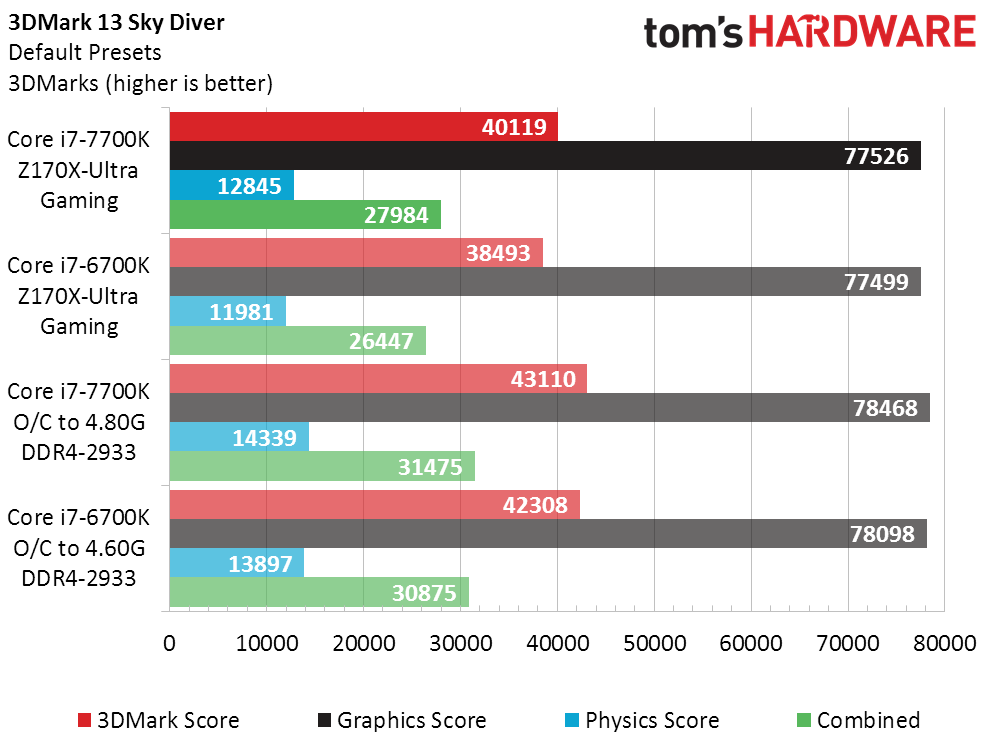
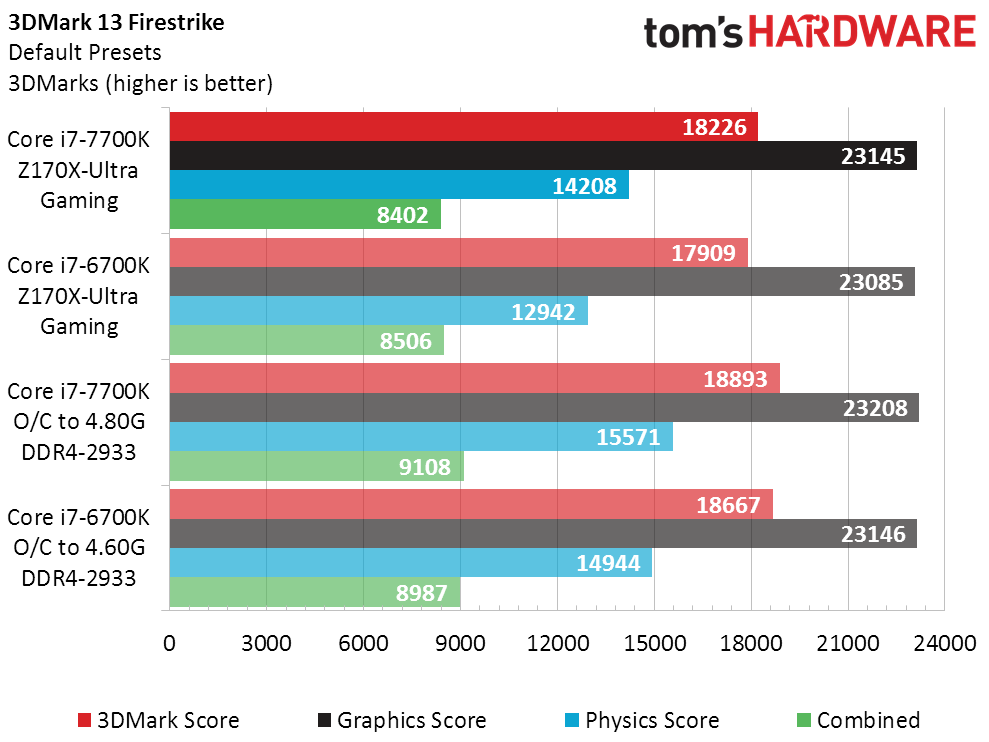
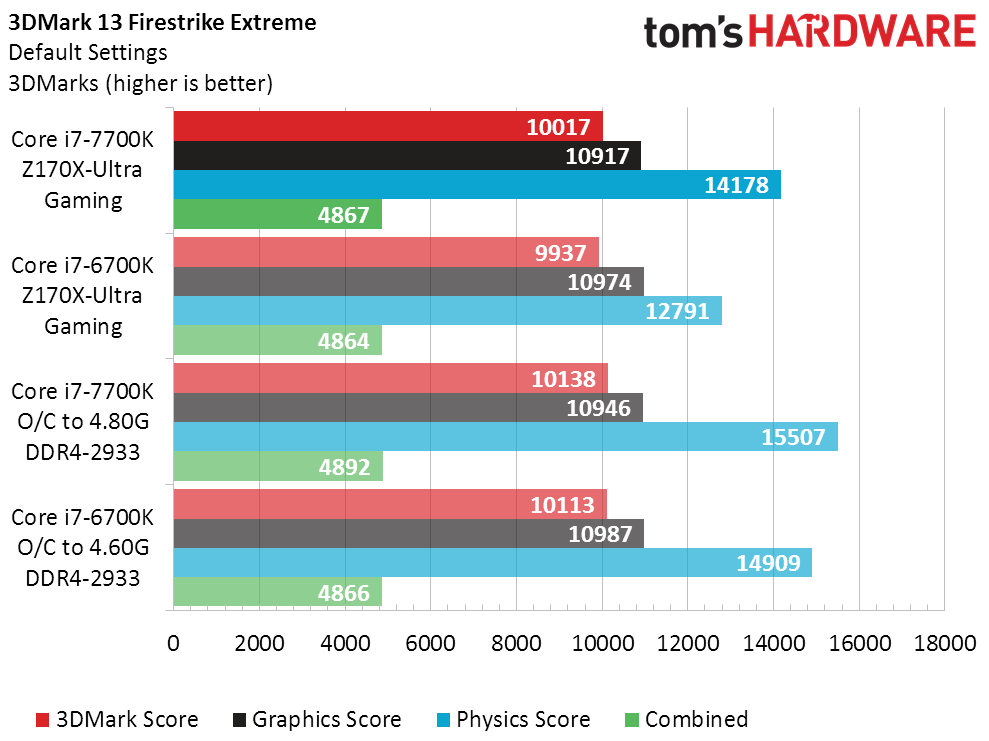
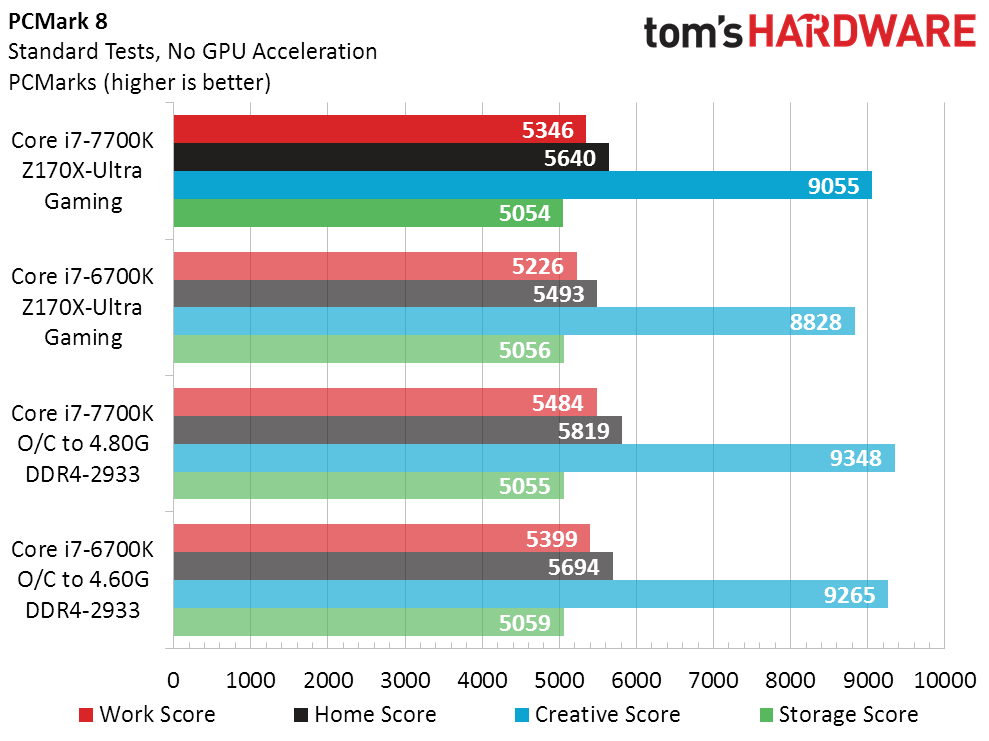

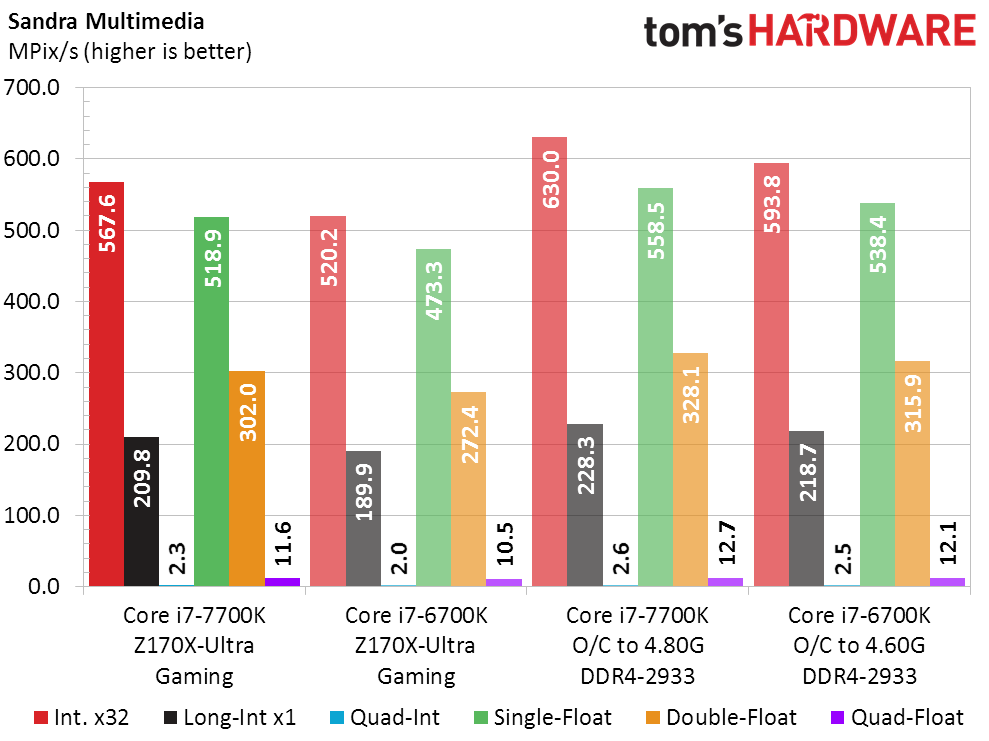
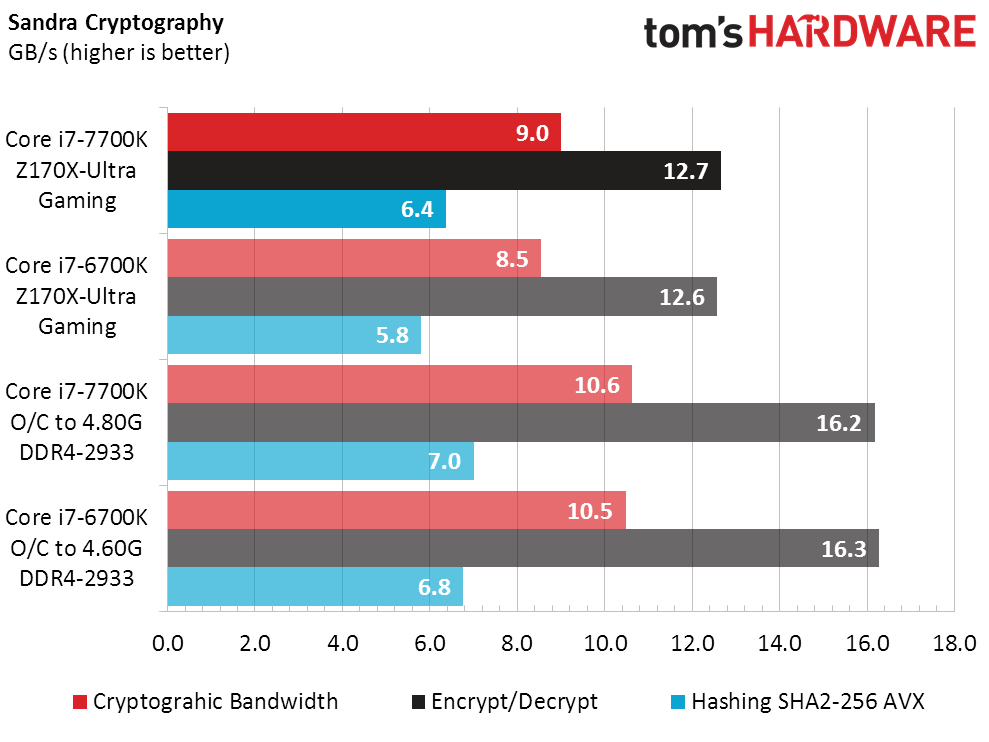
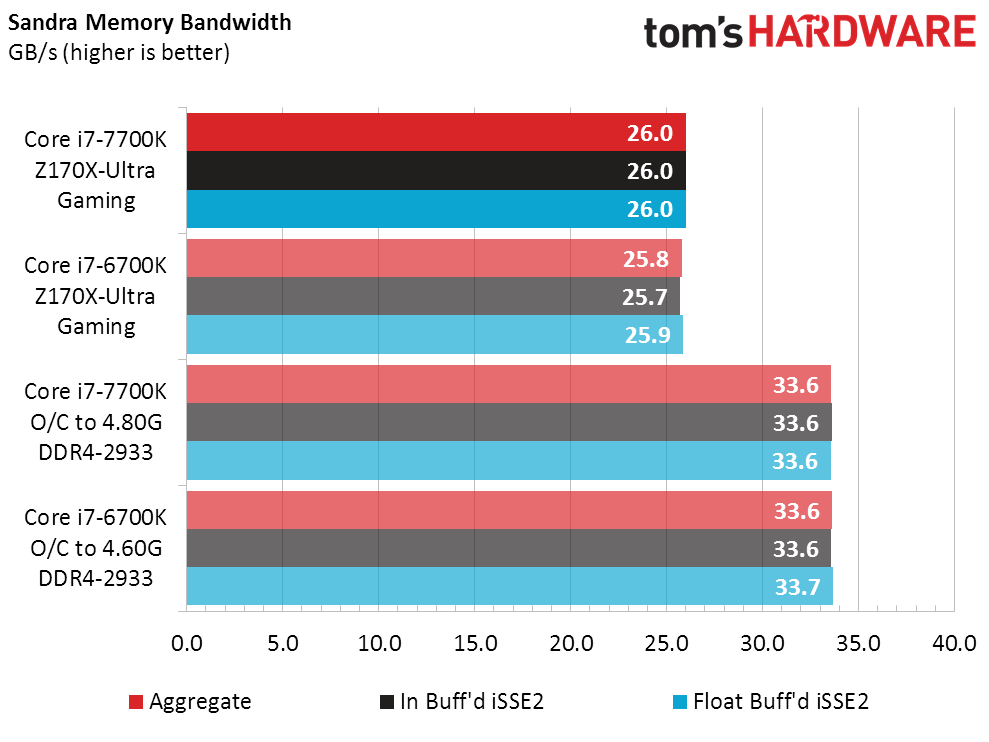
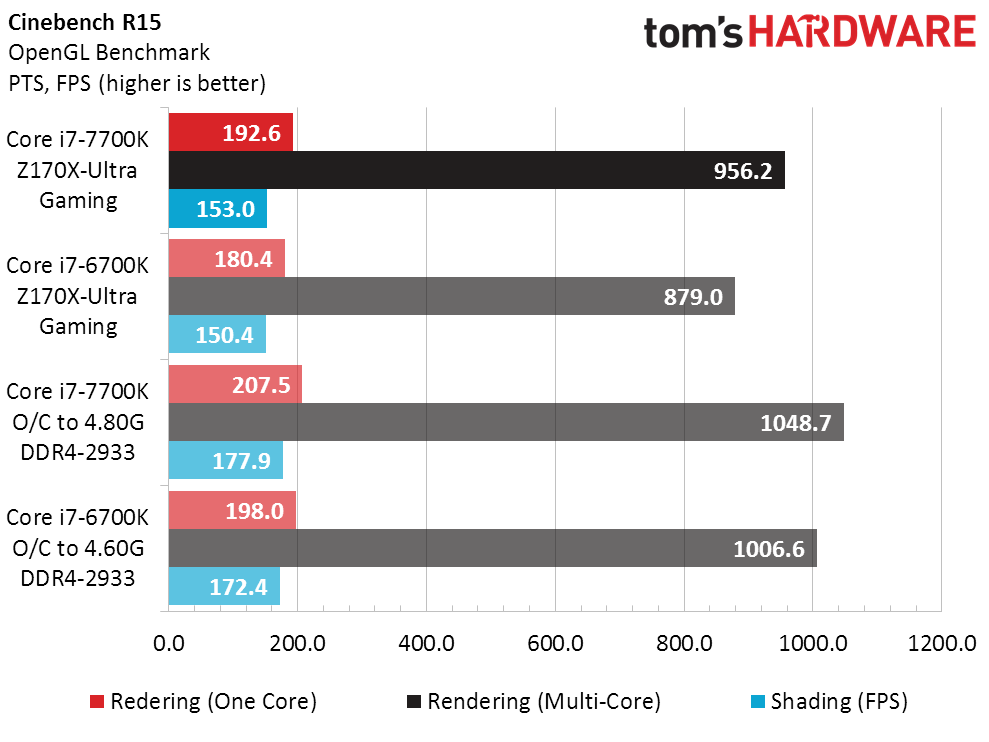
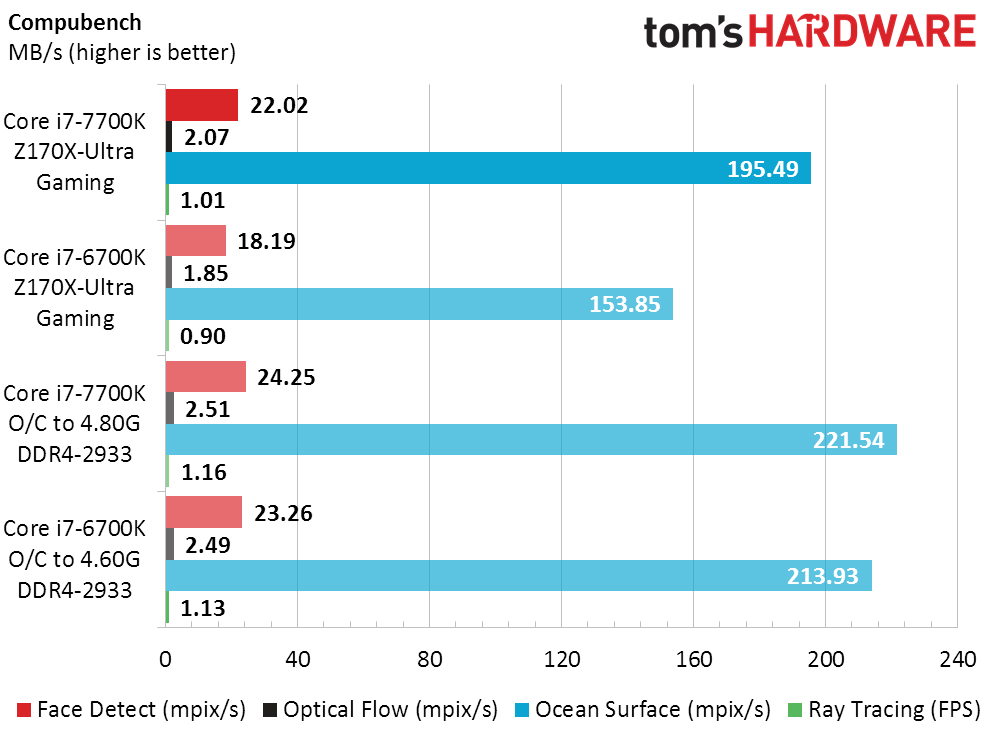
Sandra Arithmetic and Multimedia also show appreciable gains for the higher-clocked processor.
3D Games
Ashes appears to have a slight preference for faster CPU clocks, while F1 2015 responds primarily to the increased memory data rates of our overclocked configurations. F1 2015 results appear different from recent Z170 motherboard reviews because I fixed a previous error in the benchmark’s software configuration.
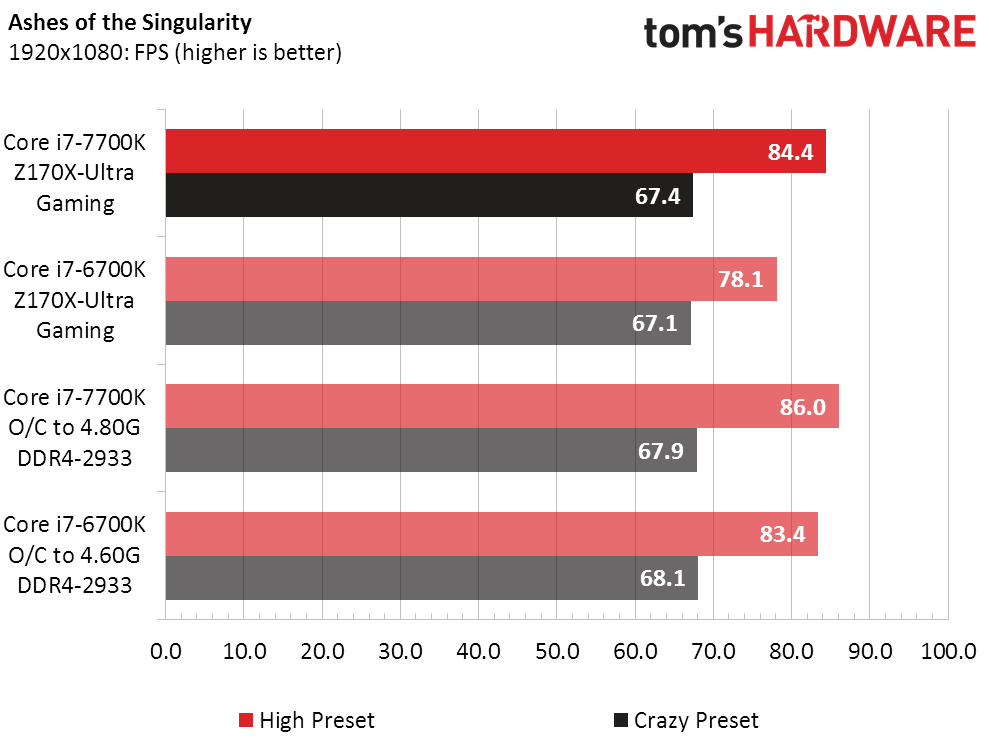
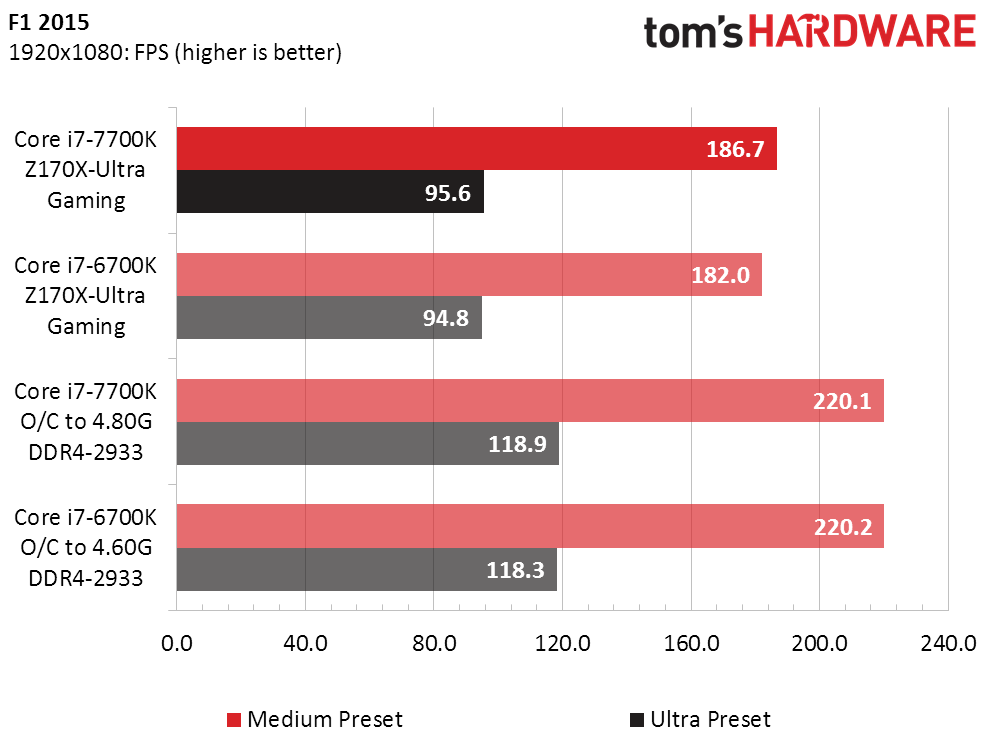
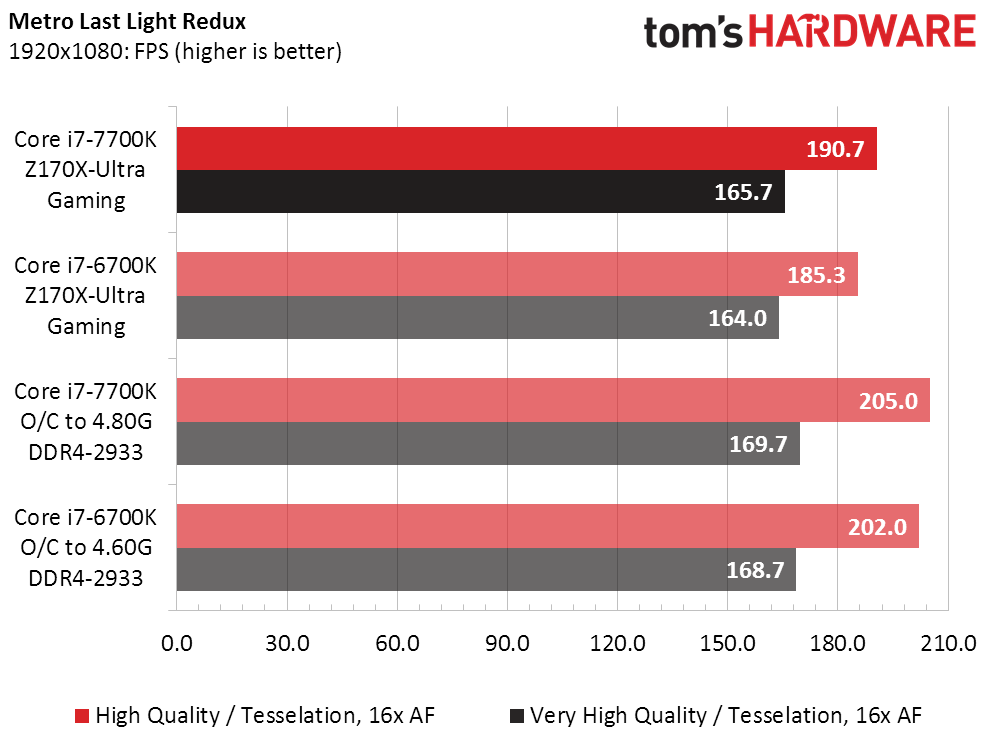
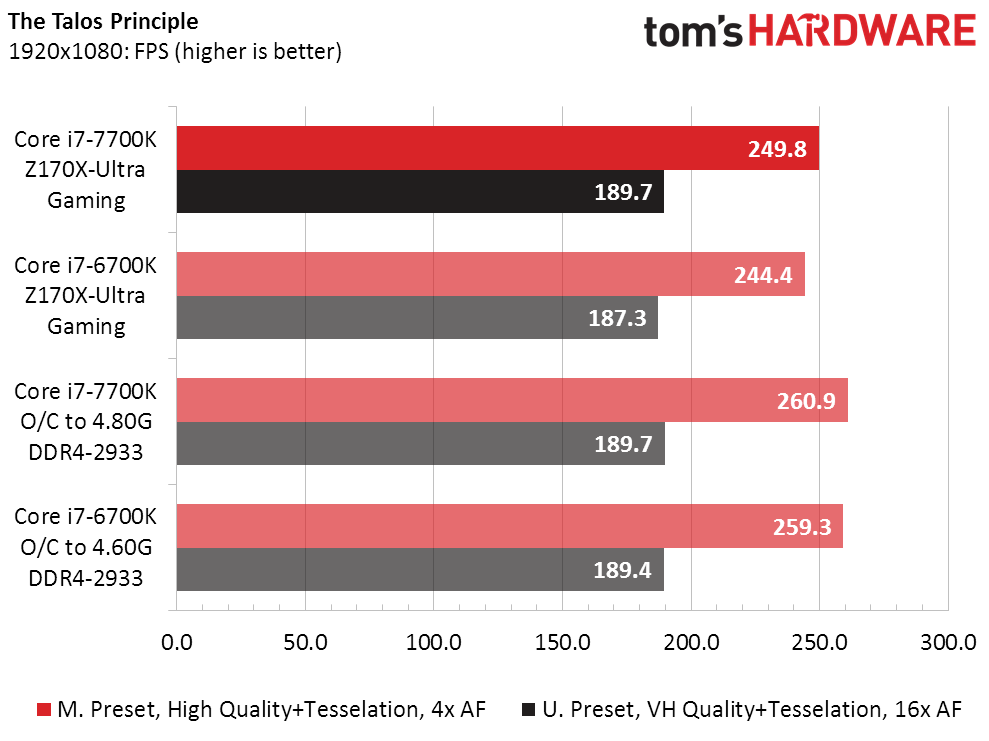
I also fixed an error in my Talos software configuration, allowing MSI’s GTX 1080 to accelerate well past 200 FPS at our medium preset. Still, FPS gains are fairly small in proportion to clock speed differences.
Timed Benchmarks
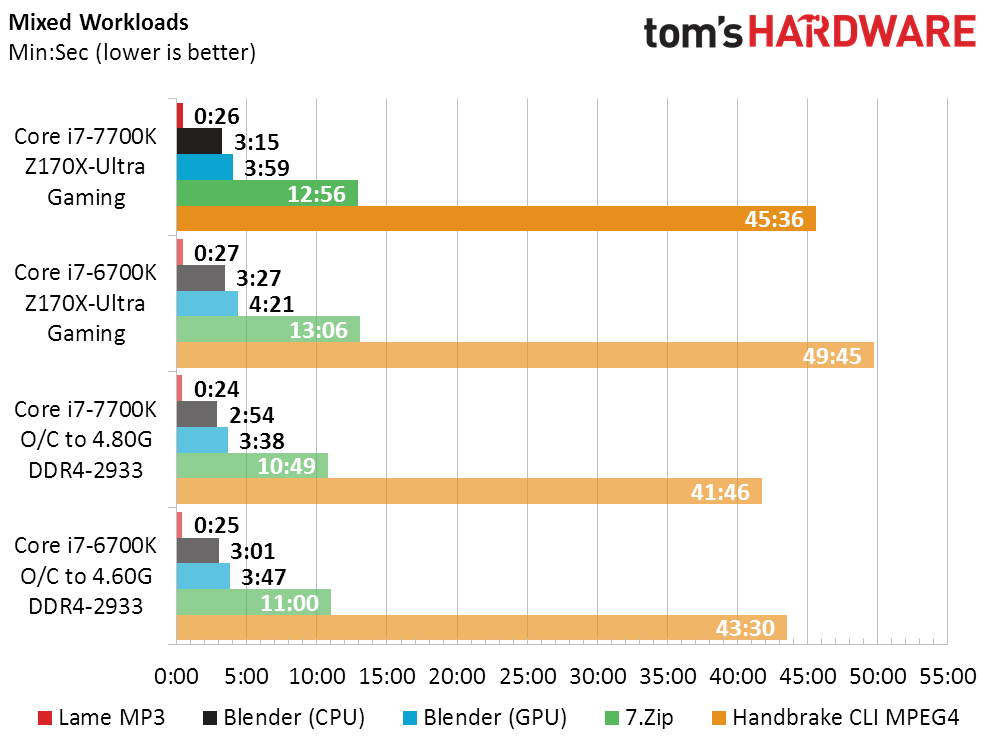
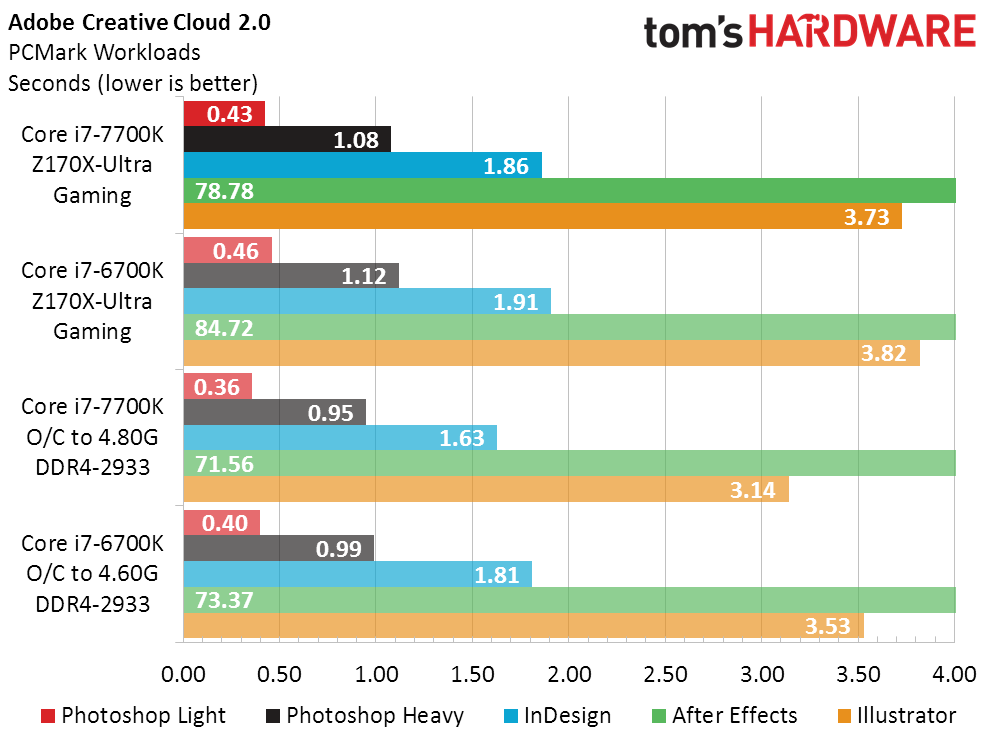
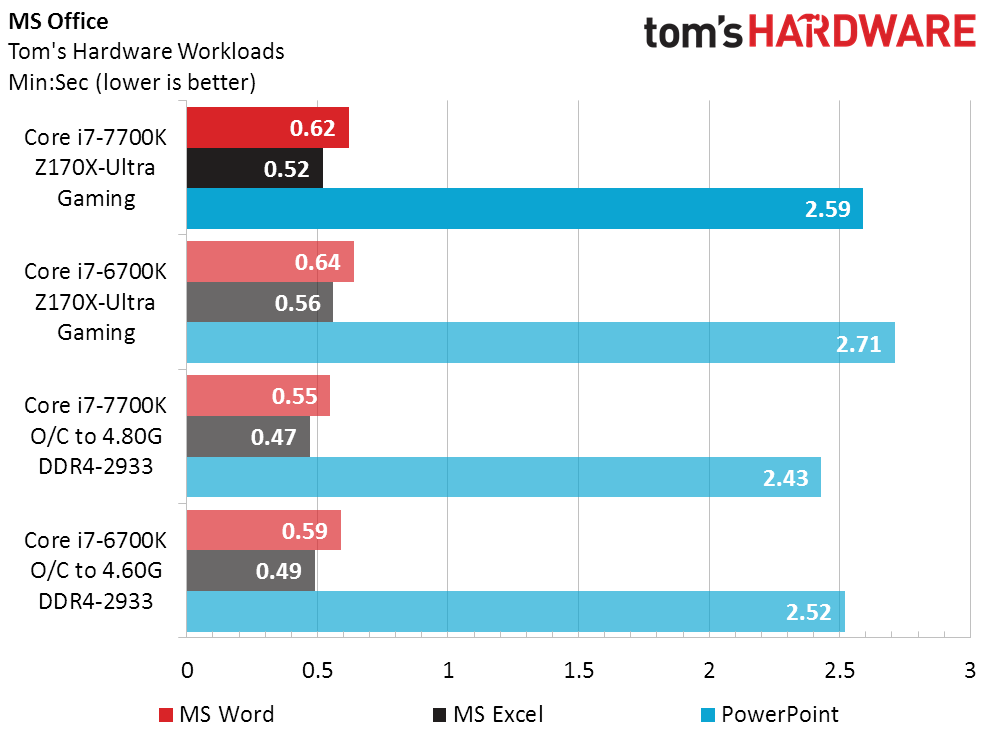
Incremental improvements in timed benchmarks show the greatest benefit of the Core i7-7700K’s clock increase. Moreover, its improved overclocking capability should put a smile on the faces of die-hard performance enthusiasts.
Heat And Efficiency
Because the Core i7-7700K acts like an overclocked Core i7-6700K, its temperatures increased just like the power increases seen on the previous page. Update: Our first follow-up test has already confirmed a lower temperature delta between the Core i7-7700K and Core i7-6700K when using a different motherboard. A 7.2% clock increase gives it a 7.2% maximum performance increase, which is diminished in benchmarks that aren’t as CPU-constrained.
Get Tom's Hardware's best news and in-depth reviews, straight to your inbox.
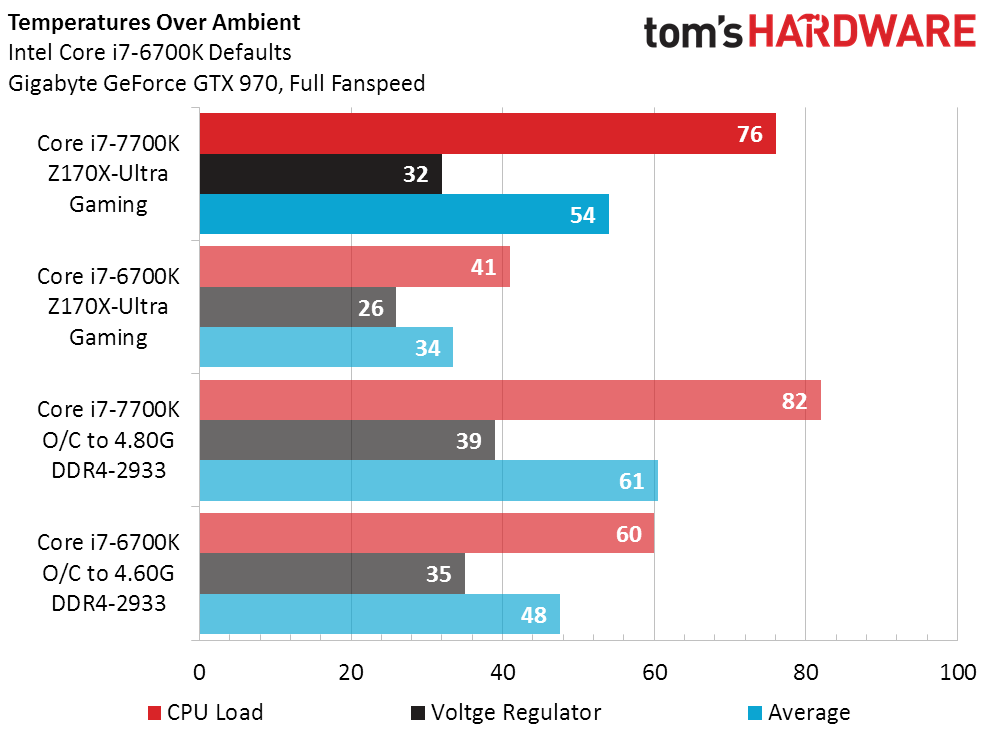
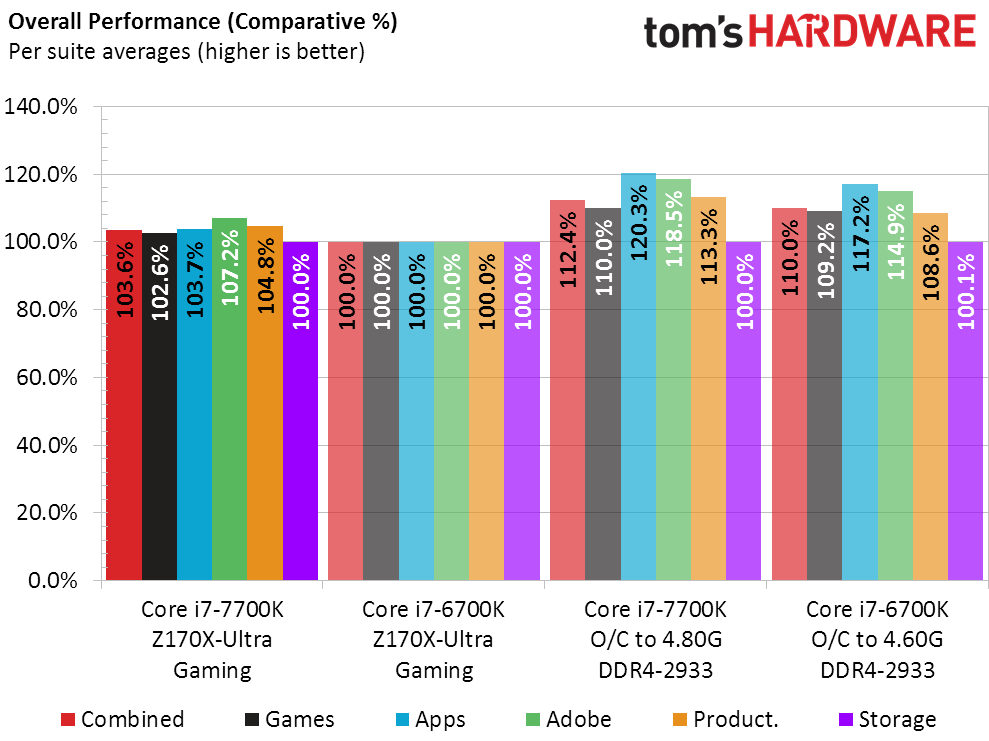
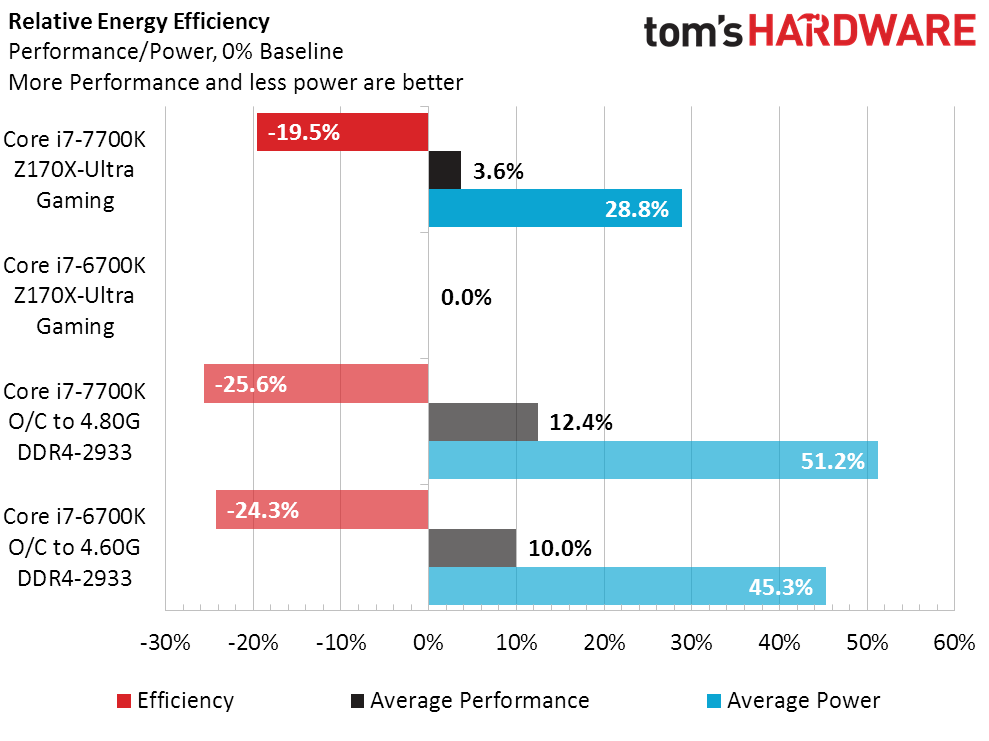
Intel’s Kaby Lake efficiency pretenses are thrown out the window in the Core i7-7700K, at least when paired with this motherboard. Perhaps we have something to look forward to when Z270 finally gets here?
For true performance enthusiasts, the real news is that Intel’s new mainstream-socket enthusiast CPU will reach new overclocking heights. Unfortunately, getting its extra heat out of the core was quite a challenge, as even stepping up from Noctua’s NH-U12S to its NH-D14 saved a mere 3°C. This overclocking experiment even required a 15°C room temperature, which is something most readers won’t be able to accomplish. Big liquid might help, but since the cooler’s heatpipes were barely warm to the touch, there’s a possibility that 4.8 GHz may be the limit of this sample while using any ambient-temperature cooling solution. Still, the fact that it reached 4.8 GHz without sub-ambient cooling is encouraging.
Other points of interest, such as built-in HEVC and VP9 8/10-bit encode/decode, may be revealed when our CPU team is able to publish their full review. Until then, the extra overclocking capability at least gives performance enthusiasts who don’t yet (or still) own a (functioning) Skylake processor a reason to wait for the Kaby Lake release.
MORE: Best CPUs
MORE: All CPU Content
MORE: Intel & AMD Processor Hierarchy
Follow us on Facebook, Google+, RSS, Twitter and YouTube.
-
sarinaide The results are kind of disappointing for a 200mhz clock bump and 200mhz overclock head room you get twice the heat and power used, and 10% at best gains but more or less less than 5%. Sorry but maybe I missed something but that is not very good.Reply -
Daniel Ladishew Why would you use a motherboard with known issues (BLCK and RAM timings) to test a brand new CPU? It seems like you would have been better served taking the extra time to switch out to a motherboard that actually performs as expected with all previous hardware, so your baseline isn't questionable. If I were Intel, I wouldn't respond to these results either. Please test again with a better performing motherboard.Reply -
ComputerSecurityGuy Does it really deserve the exclamation point?Reply
Kaby Lake has the expected identical IPC to Skylake but slightly higher clocks. The thermal figures are surprising, I would have thought that they wouldn't have done that bad.
Anyone with Skylake shouldn't bother upgrading. As expected, Intel has produced a filler chip simply because their 10nm fab is taking longer than expected. -
elbert Looks like the 14nm+ is real given +200mhz overclock gain. Now just wonder what the leaked i3-7350K can get in overclock.Reply -
MusenMouse Maybe Intel's letting AMD get a free punch before they roll them next round :). Anyways maybe Kaby Lake will be like the Broadwell lineup, fleeting and in small numbers.Reply -
logainofhades Reply18934399 said:Does it really deserve the exclamation point?
Kaby Lake has the expected identical IPC to Skylake but slightly higher clocks. The thermal figures are surprising, I would have thought that they wouldn't have done that bad.
Anyone with Skylake shouldn't bother upgrading. As expected, Intel has produced a filler chip simply because their 10nm fab is taking longer than expected.
Depends on what skylake they have. An i3 6100 user may be interested in an i5 7500 or an i7 7700. -
ubercake At max graphic settings, gaming performance differences are negligible.Reply
I'd like to see the 7700K versus a Sandy Bridge with gaming. It's probably not a whole lot different since the year 2011.
Hopefully AMD's Zen lives up to the hype "bulldozer" never did because Intel has no competition right now. -
Jamie_Lannister Im going to wait for cannonlake. For now I'll stick with my good old Ivy Bridge i5 3570k.Reply -
Aristeid3s @ubercake, There are quite a few pieces of content out there showing a skylake i5 vs a 2500k. I don't remember specifics, but it was a pretty handy increase.Reply
